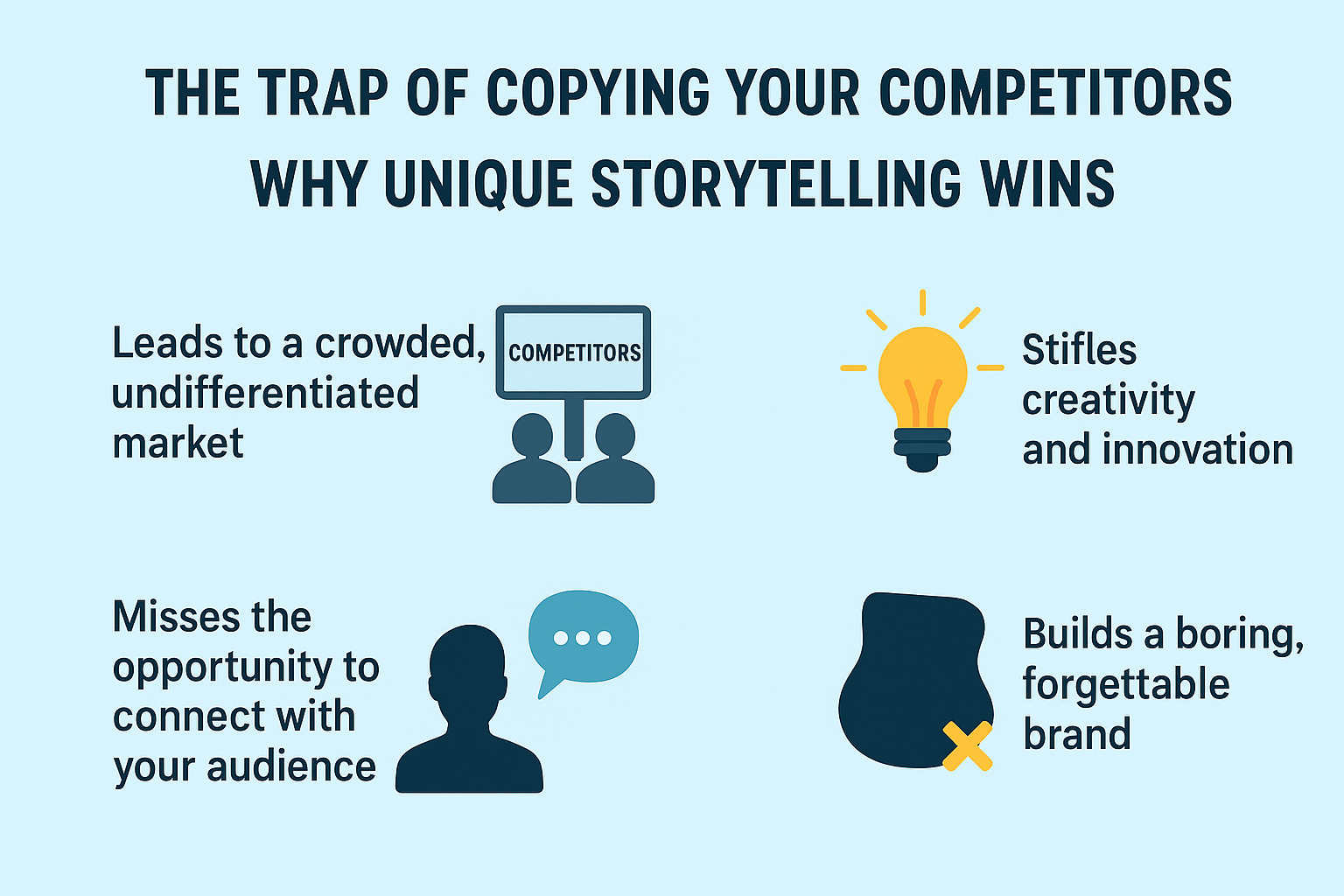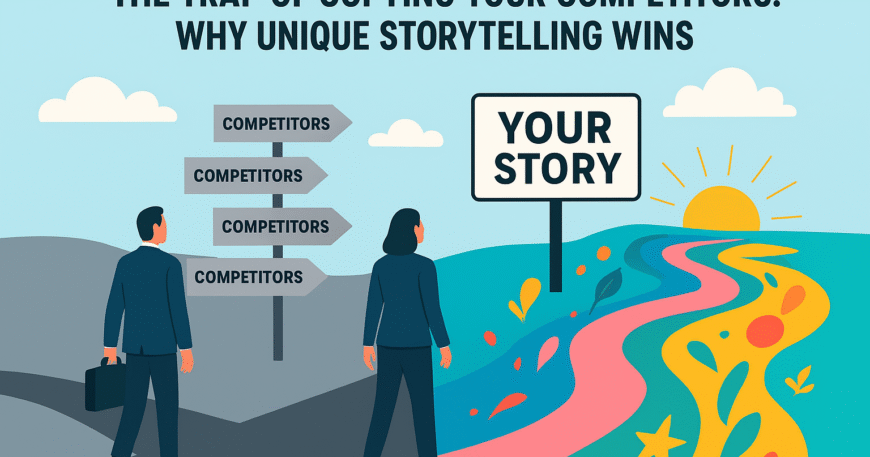Table of Contents
- The Trap of Copying Your Competitors: Why Unique Storytelling Wins
- The Illusion of Competitor Success
- The Risk of Becoming a Commodity
- The Cost of Creativity Suppression
- Copying Doesn’t Capture Context
- Customers Notice the Lack of Originality
- Why Unique Storytelling Wins
- How to Break Free from the Copycat Cycle
- Final Thoughts
In today’s hyper-competitive market, it’s tempting to look at what your competitors are doing and simply follow their lead. After all, if something seems to be working for them, why not replicate it? But here’s the hidden danger—copying your competitors doesn’t make you stand out. It makes you invisible.
When you mimic someone else’s strategy, messaging, or branding, you risk blending into the noise instead of carving out your own distinct space. In the long run, it erodes trust, stifles creativity, and weakens your brand identity.
So, let’s explore why the “copycat trap” is so harmful—and how unique storytelling is the real key to winning customers.
The Illusion of Competitor Success
It’s easy to assume your competitor has cracked the code. Their flashy website redesign, social campaign, or product launch might look impressive from the outside. But what you see is often just the surface. You don’t have access to their performance metrics, customer sentiment, or conversion data.
By copying, you’re essentially building a strategy on guesswork—not insight. Instead of driving results, you risk repeating their mistakes or chasing trends that don’t resonate with your audience.
The Risk of Becoming a Commodity
When everyone starts looking and sounding the same, the market turns into a sea of sameness. Customers struggle to tell brands apart, so they default to making decisions based on price. And if price is the only differentiator, it’s a race to the bottom.
Copying your competitors accelerates this problem. Instead of standing out, you become just another option. In contrast, originality gives you a reason to be chosen.

The Cost of Creativity Suppression
One of the biggest dangers of mimicry is how it stifles your own creativity. When your strategy is based on imitation, your team spends more energy monitoring competitors than exploring fresh ideas. This not only slows down innovation but also reduces your ability to respond to changing customer needs. Over time, your brand risks becoming predictable, outdated, or irrelevant. By contrast, companies that embrace experimentation, risk-taking, and originality build resilience. They’re not at the mercy of what their competitors do next—they set the pace.
Copying Doesn’t Capture Context
Even if a competitor’s strategy works for them, it may not work for you. Every business operates in a unique context—different audience segments, pricing models, values, and goals. Blindly adopting someone else’s playbook ignores those differences. For example, a luxury brand can successfully run campaigns that highlight exclusivity, but if a budget-friendly brand copies that tone, it creates confusion and alienates customers. Context matters, and without it, imitation leads to misalignment and missed opportunities.
Customers Notice the Lack of Originality
Audiences today are more observant and discerning than ever before. They notice when brands use recycled taglines, overused trends, or borrowed campaign styles. Instead of being impressed, customers question your authenticity. This skepticism erodes trust, which is one of the hardest things to rebuild in business. On the other hand, when customers sense originality, they reward it with attention, engagement, and loyalty. Being different signals confidence, and confidence inspires trust.
Why Unique Storytelling Wins
Stories make people feel something. Data and features may inform, but stories connect. Unique storytelling:
- Builds trust: Customers see you as authentic rather than a carbon copy.
- Creates emotional resonance: People remember stories, not sales pitches.
- Differentiates your brand: Even if products are similar, your story makes you distinct.
- Drives loyalty: Customers who connect with your story are more likely to stay with you.
Apple doesn’t sell “tech specs.” Nike doesn’t sell “shoes.” They sell a story—of innovation, empowerment, and ambition. And customers buy into that story.
Final Thoughts
Copying your competitors might feel like a shortcut, but it’s really a trap. It keeps you chasing instead of leading. The brands that win aren’t the ones that mimic—they’re the ones that master the art of unique storytelling.
Your story is your power. Don’t waste it trying to be someone else.




